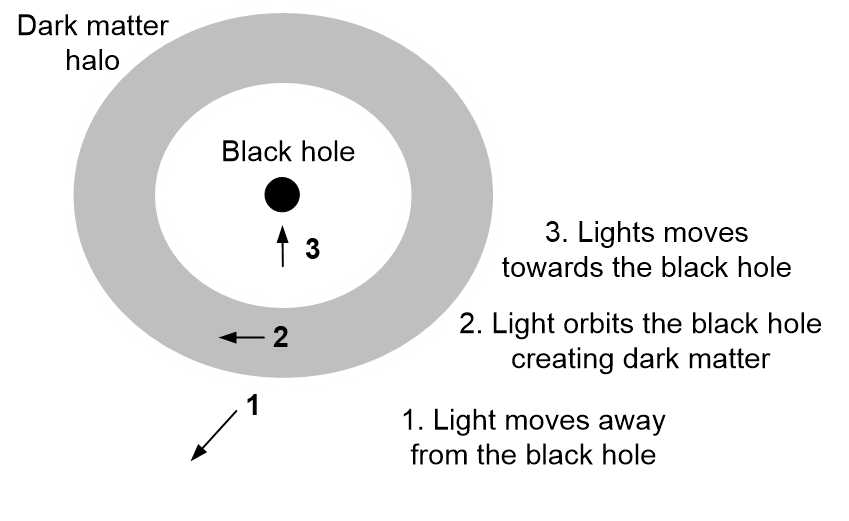In the 1950s, astronomers discovered that our galaxy rotated as if it had more matter than its visible stars allowed, five times more in fact. They concluded that most of the galaxy was “dark matter”, dark because it can’t be seen and matter because it caused gravity. Studying the rotation curves of other galaxies extended this conclusion to them and dark matter is now thought to be about 85% of the matter of the universe and quarter of its total energy. From its effects, we infer that dark matter exists as a halo around the supermassive black hole at the center of almost every galaxy, including ours.
Dark matter essentially allows a galaxy to hold its stars together more tightly than their gravity allows. It isn’t the matter we see because no light can detect it, it isn’t anti-matter because it has no gamma ray signature and it isn’t a black hole because there is no gravitational lensing, but without it, the stars of our galaxy would fly apart. Dark matter is the “glue” that binds galaxies together but its cause is unknown. Yet without it, the matter-producing factories we call stars would not have had the stability they needed to build up the periodic table elements necessary for life.
The existence of dark matter, deduced from its effect, was a problem for a physics that sees all mass as particle based. Its only option was to propose that weakly interacting massive particles (WIMPs) caused it. The result was yet another expensive wild-goose chase, despite talk of super-WIMPs (Feng, Rajaraman, & Takayama, 2003). WIMPs, like gravitons, proton decay and squarks, were another standard model misdirection, as any particle-like mass would have been seen by now. That no particle exists to explain 85% of our galaxy’s mass is a significant standard model failure.

If mass arises when a quantum processing excess repeats over time, what else could give a halo that generates mass? One possibility is that the black hole at the galaxy center traps light in an “orbit” around it. This is possible because light too close to a black hole is pulled in and light too far away escapes but at some radius, light will constantly circle in a large loop (Figure 4.26).
If light rotates in vast but finite loop around the galaxy center, from which it can’t escape, a halo of circling light would build-up over time, as more photons are added than leave. This halo wouldn’t be visible as light cannot be seen from the side.
By the pass-it-on protocol, nodes are interrupt driven, so each cycle they first pass on current processing then receive any input to process. If any node gets more processing than it can handle, it immediately passes it on. This allows an infinite pass-it-on repeat but as argued earlier, such repeats would be sooner or later absorbed by a node of new space. But if the halo of rotating light around a black hole is massive enough, new space may not add fast enough to do this. The result would be a permanent net processing excess, which in this model is mass.
A dense enough stream of light constantly circling around a black hole will generate mass. It follows that dark matter is created by light like ordinary matter, but instead of being a “particle” confined to a node, it is spread out through a vast stream of light. Light trapped in an orbit around a black hole gives rise to dark matter just as light trapped in a node gives rise to particle matter.
Ordinary and dark matter are processing that repeats but while ordinary matter is a stand-alone particle, dark matter is spread through the photon halo that builds up around a massive black hole. It isn’t seen because photons either pass through at right angles or join the stream. Dark matter doesn’t collide like particle matter because it doesn’t have a particle structure, so when galaxies collide, the dark matter doesn’t collide but stays with the black hole that creates it when they separate. This model allows small galaxies to exist with no black holes and even galaxies that have lost their stars to consist of 99.9% dark matter. Dark matter arises because mass can arise in a way other than as a “particle”.